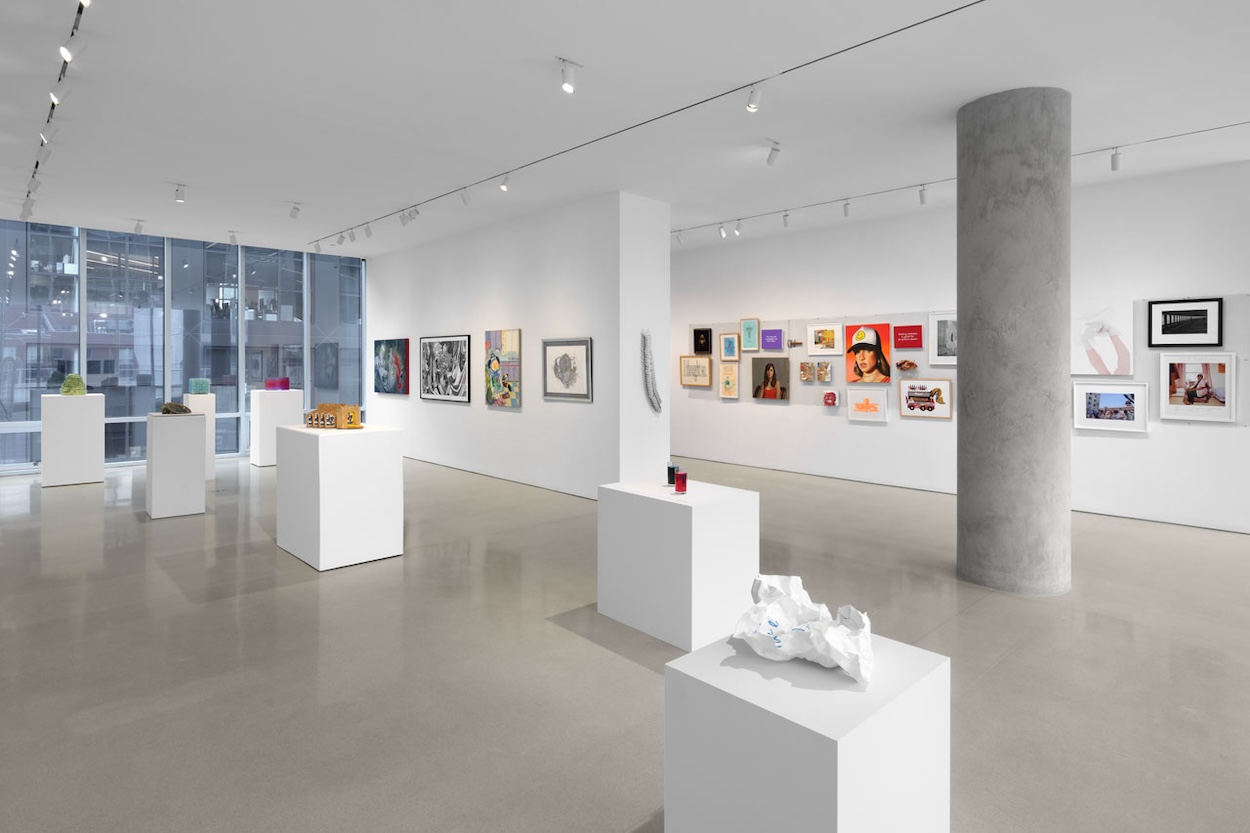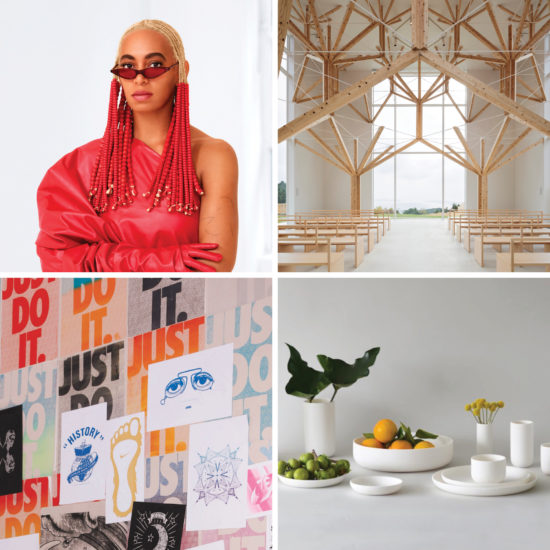When Zero Art Fair debuted last year during Upstate Art Weekend, its premise was unheard of. “All of the art is free,” say founders Jennifer Dalton and William Powhida, “with strings attached.” The duo seek to dismantle art as a commodity by placing pieces in storage—in the homes of aspiring collectors who face economic barriers to purchasing the works they’d like to live with. “Sometimes we think of the fair as socializing art, in the economic sense,” they continue. “Our fundraising model and access to the fair this year both took inspiration from food writer Mark Bittman’s idea for a community kitchen, a pay-what-you-can restaurant where all are welcome.”
In return, Dalton and Powhida, who are practicing artists themselves, grant participating artists contracts that reserve the artists’ right to sell the work or loan it back for an exhibition. also grants the artist 50 percent of the work’s sale price and 10 percent royalties on future sales. In a world where artists do not receive royalties on resales—especially as its value rises over time—such a concept on this scale is almost unheard of.
Similar to Bittman’s community kitchen concept, attendees visiting the fair with the intention to collect are asked to categorize whether they “need help to live with art,” “can sometimes afford to live with art,” or “can afford to help others live with art,” with the fair’s timed-ticket lottery prioritizing access for those who need help to do so.
Moving this year’s edition from Upstate New York to within the city was also a move done in the interest of expanded access—one that they credit the FLAG Art Foundation and Gagosian for making possible. “The rural barn setting last year was bucolic and enhanced the utopian vibes of the fair,” they said. “But we were aware that access was very limited; in order to visit one had to have a car and be able to drive to an out-of-the way location. Because the fair location is more widely accessible this year, we decided to create a timed ticket system so that visitors can still have a wonderful experience at the fair without it becoming frustrating or competitive.”
In the following interview, they share more on this year’s edition, which includes conceptual artist Diana Shpungin, painter Bo Bartlett, photographer and performance artist Chris Verene, and digital media artist Michael Mandiberg.
How has your background as artists informed your approach to organizing an art fair?
Most artists are storing a lot of their own work; and meanwhile most working people can’t afford to live with art. As artists, we acutely feel the tension between value and price within the art world. We have long felt that the art market doesn’t do a great job of finding or elevating the best art, and that it is an important endeavor to decouple value and price. The two of us have a lot of experience not selling as much artwork as we have made over the years, and we are excited to be working with a group of really talented artists who together make the point that good art is not a scarce resource.
We have worked together—and also separately—on projects about art, value, and class for over 15 years. Although Zero Art Fair is a platform rather than an art project, we find that shaping it exercises a lot of the same creative and critical resources we bring to our own work. In some ways it is a long awaited response to one of the conclusions we reached in our 2010 project, #class, which was that “art needs to make friends.”
What made you want to partner with the FLAG Art Foundation and Gagosian? What do these partnerships make possible for the fair?
Both of us have exhibited with FLAG in the past and have had great experiences working with them. They gave the fair crucial support last year, and when they offered to host the fair this year we felt it was an exciting opportunity. FLAG and Gagosian together decided to co-sponsor the fair. For us, this additional support has enabled us to offer exhibition honoraria to the exhibiting artists and to pay ourselves and those working with us for their time. Crucially, it freed up valuable time that we spent fundraising for last year’s fair; in 2024 we were able to cover the costs of the fair but everyone including us was volunteering their services and time.
Our philosophy around fundraising and access operate in relation to existing systems like the art market and philanthropy. The contract relies on the potential economic value of the artwork and we cannot produce the fair without support from people and institutions that can afford to help others live with art.
Thinking at a societal level—beyond how the fair operates—what does it look like, to you, to get the art ecosystem out of the “art as commodity mindset?”
We believe that everyone deserves to live with art. It is how contemporary art can make friends beyond the gallery system and the existing art fair circuit. We hope to open up access to art to a greater number of people, enlarging the community of people who see art as something for them, and increasing the constituency of people who think of art as something that should be supported in other ways than sales, which we know does not work for the majority of artists. Over the last two years, the premise of the fair has challenged our own assumptions and those of many of the people who’ve helped us bring the fair to life. We find people constantly rethinking who the audience is, where the audience is, and how to promote the fair.
What have artists’ responses to the Zero model been like?
We have received a range of responses: it can be painful to consider giving your artwork away. Even though the Zero Art Fair contract grants artists continuing rights in the value of their work, including resale royalties which artists don’t generally receive in the secondary market in the US and the UK, it’s still hard to let go of artworks, which can represent a life’s work, a dream, a passion. Others who participated last year expressed how great it felt when someone who could not normally afford their work was able to take it home. It was also a relief for some artists to get some artwork out of their storage spaces, studios, and basements. In person, some artists have asked if it was an elaborate joke, because It’s clearly not a sustainable model for artists to give their art away, but it’s amazing what happens when a lot of artists make a few of their works available. We can make a lot of new friends for art who may not have the means to buy it.
We have received a lot of support and interest from artists who get the premise of the fair, but it can sometimes take time to get past a scarcity mindset. A few artists on social media have been less patient or curious to think through the question “how does this help artists?!” We tend to think about how the contract, resale royalties, and expanding audiences for contemporary art might benefit us as a community.

